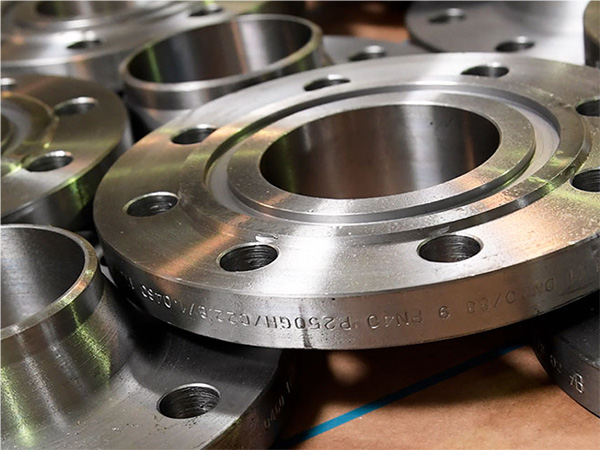Carbon steel flanges VS stainless steel flanges: a complete comparison
Flange is an important pipe connection component, which is widely used in industrial pipe system. Carbon steel flanges and stainless steel flanges are the two most common types, and they each have their own characteristics and play an important role in different application scenarios. These two flanges are compared from the aspects of material performance, cost, use, corrosion resistance and processability.

1. Material performance comparison
Carbon steel flange:
Carbon steel flanges are mainly made of carbon steel and usually contain small amounts of elements such as carbon, manganese, silicon, phosphorus and sulfur. It has high strength, good toughness and machinability, and is suitable for environments requiring high strength but not strong corrosion.
Stainless steel flange:
Stainless steel flange is mainly made of alloy steel containing chromium and nickel, common materials are 304, 316 and so on. It has excellent corrosion resistance and good mechanical properties, and can maintain stable performance even in high temperatures or harsh environments.
2. Cost comparison
Carbon steel flange:
Carbon steel flanges have lower production costs, so they are more commonly used in projects with limited budgets or large demands.
Stainless steel flange:
Stainless steel flange due to higher raw material prices, and processing costs are larger, so the overall cost is higher than carbon steel flange. It is more suitable for scenes with special requirements for corrosion resistance.
3. Corrosion resistance comparison
Carbon steel flange:
The corrosion resistance of carbon steel flanges is poor, and it is easy to be corroded by moisture, acidic or alkaline environment. Therefore, carbon steel flanges often need surface treatment, such as galvanizing, painting or anti-corrosion coating, to extend the service life.
Stainless steel flange:
Stainless steel flanges contain chromium elements, forming a dense chromium oxide protective layer in the air, with excellent oxidation resistance and corrosion resistance, especially suitable for corrosive media pipe connections.
4. Compare application scenarios
Carbon steel flange:
Suitable for low pressure pipeline systems or environments with low corrosion resistance requirements, such as general industry, hydroelectric power generation and machinery manufacturing. It is often used in pipelines to transport oil, gas or non-corrosive liquids.
Stainless steel flange:
Suitable for high pressure, high temperature or corrosive media pipeline system, such as chemical, pharmaceutical, food processing, Marine engineering and other fields.
It is often used to transport corrosive liquids (such as acid, alkali, salt solutions) or pure liquids (such as drinking water).
5. Comparison of processability and appearance
Carbon steel flange:
The machinability is good, but the surface is easy to rust and the appearance is rough, so it is not suitable for occasions with strict requirements for the appearance.
Stainless steel flange:
The machinability is slightly inferior to carbon steel, but the surface is smooth and beautiful and corrosion resistance, suitable for decorative or clean environments with high requirements.
6. Comparison of life and maintenance
Carbon steel flange:
Short service life, especially in corrosive environments, easy to damage, the need for regular inspection and maintenance, increased operating costs.
Stainless steel flange:
Long service life, almost no special maintenance can be used for a long time, especially in corrosive or high temperature environments.
7. How to choose the right flange?
(1) According to the type of medium
If the pipeline transport is corrosive or high purity media, should choose stainless steel flange.
If the pipe is carrying ordinary liquids or gases, carbon steel flanges can meet the needs.
(2) According to the use environment
In corrosive or high temperature environments, stainless steel flanges should be preferred.
In normal temperature, dry or low corrosive environments, carbon steel flanges can be used to reduce costs.
(3) According to the project budget
If the budget is limited, carbon steel flanges are a more cost-effective option.
If the project has higher performance requirements, stainless steel flanges are a wiser investment.
Conclusion:
Carbon steel flanges and stainless steel flanges have advantages and disadvantages: carbon steel flanges are economical and suitable for general industrial use; Stainless steel flange has excellent performance and is the best choice for high-end engineering. Reasonable selection of flange types according to specific working conditions can effectively reduce costs, improve engineering quality and equipment reliability.
read more: Flange processing technology
